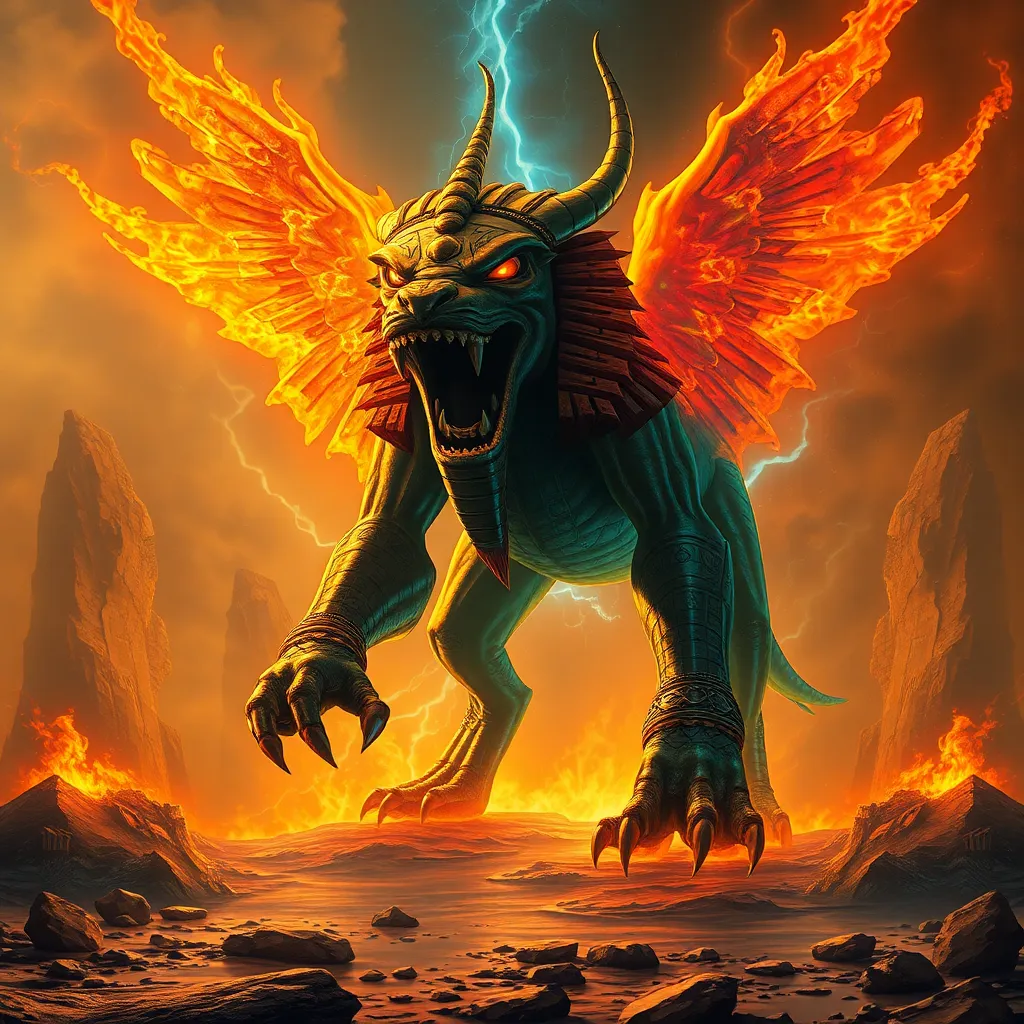The Fearsome Nature of Ammit: A Mythical Perspective
I. Introduction
In the rich tapestry of Ancient Egyptian mythology, few figures evoke as much awe and dread as Ammit, the devourer of souls. Known for her fearsome nature, Ammit plays a crucial role in the complex beliefs surrounding the afterlife in ancient Egypt. This article aims to delve into the significance of Ammit, exploring her origins, physical attributes, and the psychological implications of her existence within the framework of Egyptian morality and justice.
II. Origins of Ammit
The origins of Ammit can be traced back to the deep-seated beliefs of the Ancient Egyptians concerning the afterlife. Ancient Egyptians viewed life as a continuum, where the soul’s fate after death was of utmost importance.
- Historical Context: The Ancient Egyptians believed in a dual existence; the physical and the spiritual. The soul underwent a series of trials after death, with the weighing of the heart being the most critical.
- Lineage and Associations: Ammit is often depicted as a composite creature, embodying the most fearsome aspects of various animals, symbolizing the consequences of immoral living.
- The Book of the Dead: Ammit is prominently featured in the “Book of the Dead,” a collection of spells and prayers designed to assist the deceased in navigating the afterlife.
III. Physical Description of Ammit
Ammit’s appearance is as striking as her role in mythology. She is often portrayed as a fearsome creature with a unique composite form.
- Crocodile: Symbolizing ferocity and unpredictability.
- Lion: Representing strength and power.
- Hippopotamus: Evoking danger and aggression, particularly in the context of rivers and water.
The symbolism behind these features communicates a sense of terror, embodying the consequences of a life poorly led. In various artistic representations, Ammit is shown waiting eagerly for those judged unworthy, her menacing form serving as a stark reminder of the moral code that governed Egyptian society.
IV. The Role of Ammit in the Weighing of the Heart
Ammit’s most significant role occurs during the weighing of the heart ceremony, a pivotal moment for the souls of the departed.
- Judgment Process: In this ceremony, the deceased’s heart is weighed against the feather of Ma’at, the goddess of truth and justice.
- Function as a Devourer: If the heart is heavier than the feather, indicating a life of wrongdoing, Ammit consumes the soul, ensuring that it does not enter the afterlife.
- Implications of Failing Judgment: The fate of being devoured by Ammit meant eternal oblivion, a fate worse than death itself.
V. Ammit as a Symbol of Fear and Consequence
The presence of Ammit in Egyptian mythology served a dual purpose: instilling fear and promoting moral behavior.
- Psychological Impact: The fear of Ammit acted as a deterrent against immoral actions, as individuals sought to live just and righteous lives.
- Fear as Motivation: This fear was a powerful motivating factor, urging the populace to adhere to societal norms and moral guidelines.
- Justice and Mercy: Ammit represents the balance between justice and mercy, reflecting the Egyptian belief in accountability for one’s actions.
VI. Ammit in Popular Culture
In contemporary times, Ammit has found her way into various forms of media, becoming a symbol of ancient mythology.
- Modern Media: She has been depicted in films, television series, and literature, often portrayed as a fearsome antagonist.
- Comparisons to Global Mythical Creatures: Ammit’s characteristics draw parallels to various mythical creatures worldwide, such as Cerberus in Greek mythology and the Chimera in ancient legends.
- Resurgence of Interest: The fascination with Egyptian mythology has surged, leading to a renewed interest in figures like Ammit, who encapsulate the moral complexities of ancient beliefs.
VII. The Legacy of Ammit
Ammit’s legacy continues to resonate in modern interpretations of morality and justice.
- Influence on Modern Mythology: Ammit serves as a reminder of the importance of ethical living and the consequences of one’s actions.
- Contemporary Discussions on Justice: Her image evokes discussions about accountability and the moral implications of our choices in today’s society.
- Symbol of Accountability: Ammit symbolizes the eternal truth that actions have consequences, a principle that remains relevant in contemporary moral discourse.
VIII. Conclusion
In summary, Ammit occupies a significant place in Ancient Egyptian mythology, serving as a powerful symbol of fear, consequence, and moral accountability. Her fearsome image endures, reflecting the complexities of human behavior and the societal norms that guide it. As we reflect on Ammit’s impact, we recognize the timeless relevance of mythological figures in our understanding of justice, morality, and the human condition.




